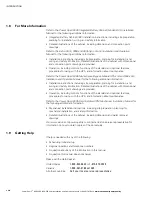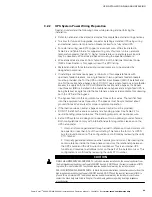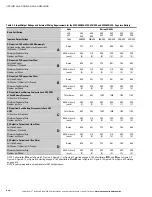
UPS INSTALLATION PLAN AND UNPACKING
Power Xpert
9395 UPS (450–550 kVA) Installation and Operation Manual
164201701 Rev 3
www.eaton.com/powerquality
3-8
C
A
U
T
I
O
N
When selecting the most appropriate grounding scheme for your application, consider items such as:
Ground fault detector settings
Site specific specifications and requirements
Local codes and regulations
In a common battery system, single and multiple UPMs are powered from one
common battery source. In a separate battery system, multiple UPMs are each
powered from separate battery sources.
UPMs in distributed bypass and parallel systems must use a separate battery
system.
On a UPS configured for separate rectifier inputs, all sources that feed the
separate rectifier inputs must be derived from a common ground point.
On a UPS configured as an Input Output Module (IOM), requirements for bypass
input wiring, termination, conduit, and bypass breaker are not applicable.
A Field Installed UPM (FI-UPM) is always designated as UPM 4.
If the power rating listed on the nameplate of the installed UPS is not found in the
following tables, wire the UPS using the fully rated specifications. Otherwise,
calculate the required wire, conduit, and breaker sizes using the following guidelines
in addition to those already listed in paragraph 3.2.2:
Select wire size according to the UPS nameplate.
Do not use wire larger than the largest size listed in Table 3‐4 through Table 3‐6.
Use terminal recommendations from Table 3‐8 through Table 3‐11.
Size and number of conduits must not exceed those listed in Table 3‐12.
Select overcurrent protection input, battery, and output breakers according to the
UPS nameplate rated for either 80% or 100%.
Follow all applicable NEC and local codes.
















































